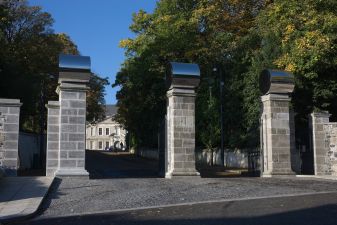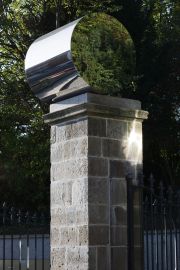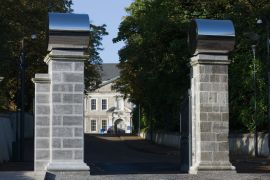A major international symposium which investigates new perspectives on the role and function of public galleries and museums in the 21st-century will be held at the Irish Museum of Modern Art, Dublin, from 12 – 13 November 2008. Museum21 will bring together six leading international artists, curators and historians who together will present a vast range of perspectives on the role of galleries and museums informed by past and present contemporary art and practice. The theme of the symposium traces the historic function of the museum, in particular the impact of institutional critique in the 1960s and early 1970s and questions how best galleries and museums can maintain their relevance and legitimacy in the contemporary world.
Exploring the wider notion of the museum as institution, idea and practice, the following questions arise: ‘What is the point’ of a museum in the 21st-century? Should galleries and museums compete or create an alternative to the mega exhibitions of Biennales and Art Fairs? How can galleries and museums best serve a mobilised multicultural public? Has the need to attract audience and funding made the artistic or intellectual credibility of galleries and museums questionable? Are public galleries and museums still the main sites for cultural innovation and the reception of contemporary art?
This is the fourth in a series of international symposia at IMMA exploring institutional issues relating to galleries and museums. To Have and To Hold, 2003, addressed collecting policies, Curating Now, 2004, investigated curatorial practice and Access All Areas, 2006, addressed public access to contemporary art and artists.
Papers will be presented by the following six international speakers:
Okwui Enwezor, is a curator and critic and currently Dean of Academic Affairs and Senior Vice President, San Francisco Art Institute, San Francisco, and Adjunct Curator, International Center of Photography, New York.
Charles Esche, is a curator and writer and currently Director of Van Abbemuseum, Eindhoven, The Netherlands.
Andrea Fraser, Artist, based in New York, whose work has been identified with performance, video, context art and institutional critique.
Enrique Juncosa, Director, Irish Museum of Modern Art, Dublin.
Susan Pearce, Professor of Museum Studies, University of Leicester, UK.
Carey Young, Artist, based in London, whose work employs a variety of media, including video, photography and performance.
The symposium will be chaired by Siún Hanrahan, writer and artist, and from September 2008 Head of Research and Postgraduate Development at the National College of Art and Design, Dublin. The discussion moderator is Jens Hoffmann, Director, Wattis Institute for Contemporary Art, San Francisco, and Senior Lecturer, Curatorial Practice Programme, California College of the Arts.
The fee for the symposium is €90 for organisations, €40 for individuals, or €20 concession (students, OAPs, unwaged). In addition to the presentations, this includes an opening reception (12 November), lunch and refreshments (13 November) and the symposium pack.
A Booking Form is available to download from the IMMA website at www.imma.ie It will be possible to book online from early September. Booking is essential as places are limited.
In association with this year’s symposium a time-based web resource will be available leading up to the live event featuring information about IMMA’s biannual symposia, archival material, profiles of speakers, bibliographies, associated events and blog. This will be available from September at www.imma.ie/museum21
Further information
Jen Phelan, Administrator: Education and Community Programmes
Irish Museum of Modern Art
Royal Hospital, Military Road
Kilmainham, Dublin 8, Ireland
Tel +353-1-6129919/3 Fax +353-1-612 9999
Email [email protected]
Website www.imma.ie
Museum21 is programmed by Sophie Byrne: Assistant Curator: Talks and Lectures, Education and Community Department, IMMA.
For further information please contact Monica Cullinane or Patrice Molloy at Tel : +353 1 612 9900, Fax : +353 1 612 9999, Email : [email protected]
19 August 2008


